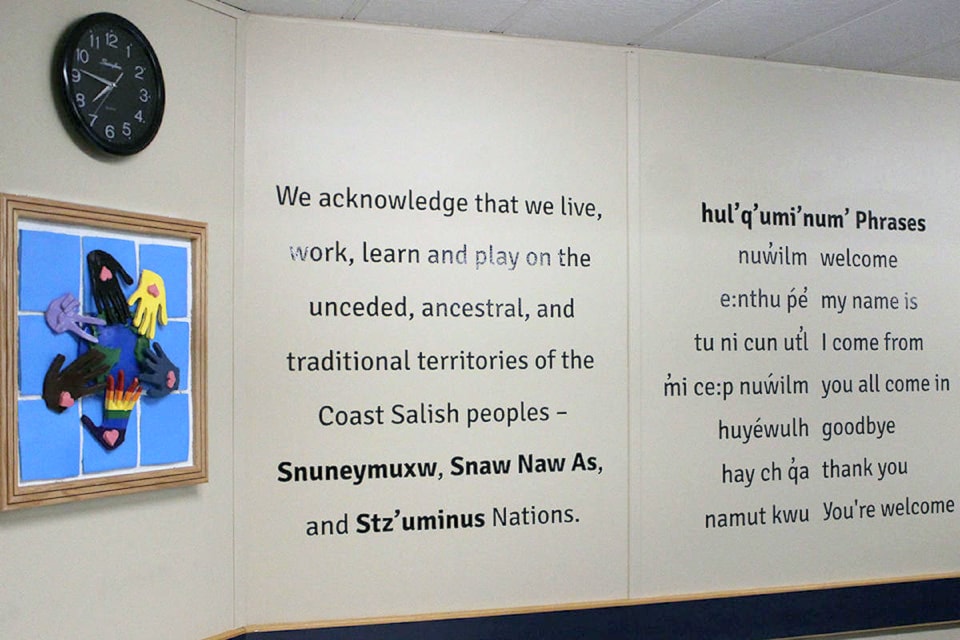Indigenous language has seen a significant boost on the mid Island, with 37 per cent of Indigenous youths able to speak a few words compared to 10 per cent a decade ago.
In the Nanaimo-Ladysmith school district, the main Indigenous language is Island hul'q'umi'num', passed down through the Snuneymuxw, Snaw-Naw-As and Stz'uminus First Nations.
“I’m happy to see our younger people working hard to preserve and learn our language," said Snuneymuxw Chief Mike Wyse. "It means a lot to know community members are attending our beginner and intermediate hul’q’umi’num’ classes at the Snuneymuxw Learning Academy and then continuing with post secondary language studies."
Laura Tait, interim superintendent of Nanaimo Ladysmith Public Schools, said the increase in Indigenous language speakers doesn't surprise her.
"We've been attempting to build our knowledge and delivery of hul'q'umi'num' language for a number of years," she said. "We've also been working really hard with our rights holders, our partner groups to support and increase our number of hul'q'umi'num' language teachers."
Through the district, 17 schools have elders in residence and hul'q'umi'num' language teachers. Tait said the district's focus has been making programs available in schools that have a higher Indigenous population and populations closest to reserve, including Qwam Qwum Stuwixwulh School, which receives a contingent of culture and language supports.
One of those additional supports at Qwam Qwum is hul'q'umi'num' theatre, which Wyse said is encouraging.
"By deepening our understanding of the relationship between language, land, and culture, our complex Snuneymuxw knowledge systems can be fully appreciated," Wyse said.
In applicable elementary schools, students in the district may receive language instruction a couple times a week, while at the secondary level, the hul'q'umi'num' courses are scheduled as distinct classes. Any student is welcome to take the language classes, whether Indigenous or non-Indigenous, and receive a credit.
Tait said hul'q'umi'num' language teachers are a priority in hiring, and the district supports those who are studying to teach it, including creating positions to practise language teaching while the individual actively pursues credentials. As an incentive to work for the district, the language teachers make the same salary as those with a masters, recognizing their specialty.
Long-term, Tait said the district would like to increase the amount of hul'q'umi'num' being utilized by teachers without a specialization in the language.
"We would like to consider and look at the prospect of maybe an immersion approach," Tait said. "We would also like to see and look at hul'q'umi'num' as a second language being taught at the elementary level, which we haven't seen as much, rather than as an example, in place of French as a second language, which is of course a curriculum requirement in the B.C. curriculum."
The language data come from a B.C. adolescent health report released earlier this summer. The survey was conducted by the McCreary Centre Society, with funding from the B.C. government, and was completed by approximately 38,500 youths between 12-19 in 59 of B.C’s 60 school districts. The central Vancouver Island report looked at survey results from the Nanaimo-Ladysmith, Qualicum, Pacific Rim, and Cowichan Valley school districts.



